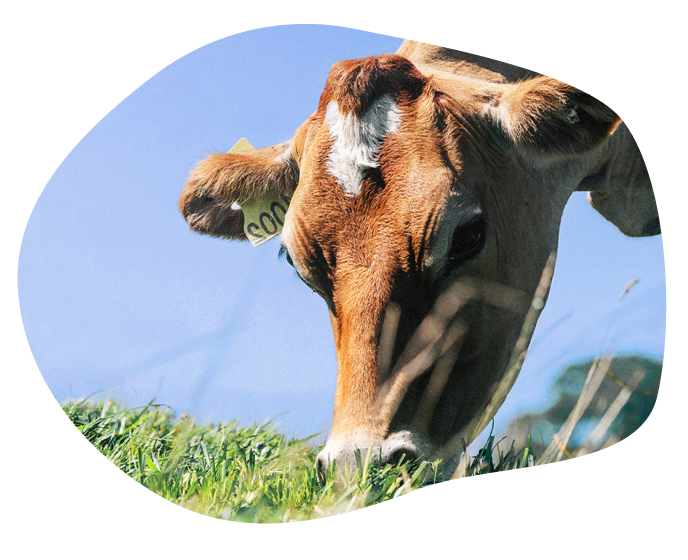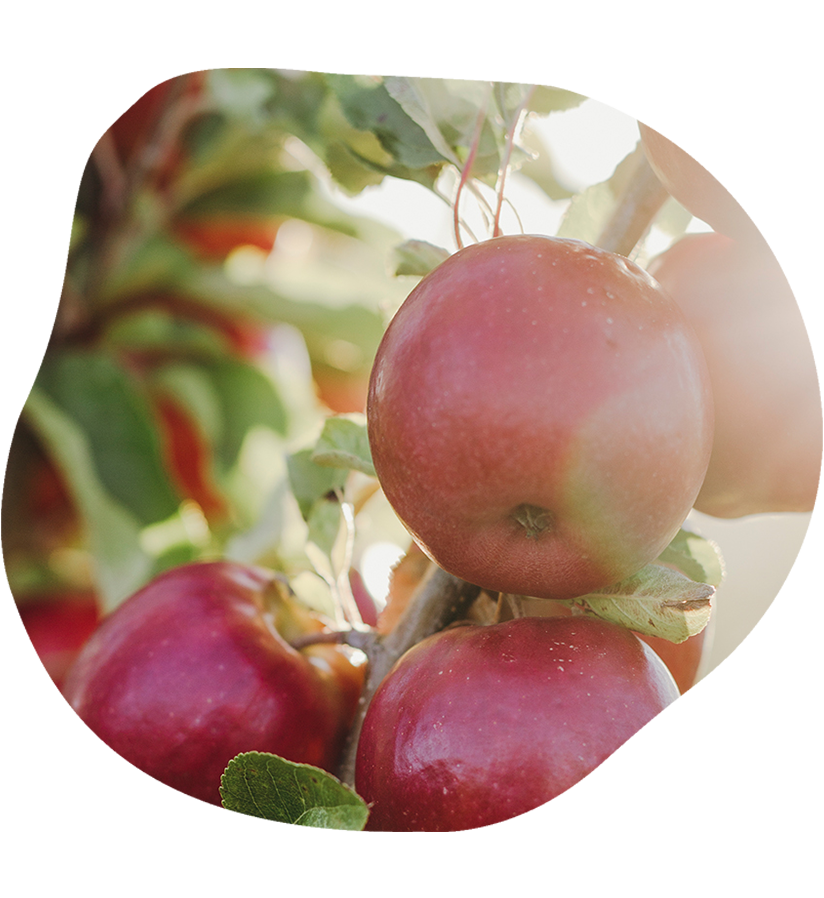OUR TOP REASONS TO EAT ORGANIC
Discover the top reasons to choose organic and how it benefits your family. We've included some of the best videos and articles from around the world, so you don't just have to take our word for it


But here's the beauty of organic— it's different. It's not just a fancy buzzword; it's a strict set of rules that ensure food is produced the way nature intended, free from synthetic fertilisers and pesticides.
And importantly, you can’t just decide to become organic overnight. It takes a minimum of 3 years to convert an ordinary farm to a certified organic farm. That’s how long it takes to flush out the bad stuff.
100% of Bellamy’s Organic products are certified organic.
This means that every step of our production chain, from farming through to packaging, is regularly audited to ensure we keep our promise.
If you’re thinking that it sounds like a lot of work to be certified organic. You’re right. It’s why less than 1% of the world’s farmland is certified organic. ¹
1 The World of Organic Agriculture, 2017 Yearbook, FiBL, IFOAM

In a study of over ten thousand conventionally grown fruits and vegetables, more than 75% were found to contain pesticide residues, even after washing and peeling²
Emerging research by the American Academy of Pediatrics ³ and others suggests that high-pesticide-residue foods may contribute to chronic health problems in children, such as neurodevelopmental issues.
At Bellamy’s Organic, we prefer not to experiment on ourselves or our kids. Our products are free from synthetic pesticides and fertilisers.
1 National Research Council (US) Committee on Pesticides in the Diets of Infants and Children, 1993
2 U.S. Department of Agriculture, Pesticide Data program, 2018
3 Pesticide Exposure in Children, American Academy of Pediatrics, 2012


We believe happy, healthy, organic cows produce the best milk.
Organic cows are ‘free range’, which means they can roam freely on pastures, eating fresh organic grass and hay. They are fed absolutely no genetically modified grain, corn or soy.
Why does a grass-rich diet matter? It directly impacts the milk quality, making it higher in Omega-3 fatty acids. Organic cow's milk contains an impressive 40-60% more omega-3 fatty acids, including the sought-after long-chain ones like EPA, DPA, and DHA¹,².
These long-chain omega-3 fatty acids are superheroes for our children's well-being. They contribute to brain development, reduce inflammation, and are linked to a lower risk of chronic conditions.
While oily fish like salmon and sardines are rich sources of long-chain omega-3s fatty acids, organic milk has emerged as another important source, especially for our kids.
1 Nafferton Ecological Farming Group, University of Newcastle. “Higher PUFA and omega-3 PUFA, CLA, a-tocopherol and iron, but lower iodine and selenium concentrations in organic bovine milk: A systematic literature review and meta- and redundancy analysis”. Srednicka-Tober et al. 2016. British Journal of Nutrition.
2 Organic Production Enhances Milk Nutritional Quality by Shifting Fatty Acid Composition: A United States-Wide, 18-Month Study. Center for Sustaining Agriculture and Natural Resources, Washington State University. Published in PLOS in 2013

Studies show that organic produce has higher levels of antioxidants and lower levels of toxic metals like cadmium¹.
Researchers cite two potential causes:
Organic crops make antioxidant compounds in response to stress, such as exposure to insects or diseases. Conventional crops are typically protected with synthetic pesticides, which dampens their stress response.
Conventional crops are typically supplemented with synthetic fertilisers which effectively accelerates their growth and dilutes their nutrient content.
Whist trying to isolate the health benefits of nutrients is difficult, many antioxidants have been linked to a reduced risk of chronic diseases, including cardiovascular diseases, neurodegenerative diseases and certain cancers.
1 Higher antioxidant and lower cadmium concentrations and lower incidence of pesticide residues in organically grown crops: a systematic literature review and meta-analyses, Branski 2014, published in British Journal of Nutrition


It's a living ecosystem full of vital microbes that break down organic matter and unlock essential nutrients for plant growth.
Unfortunately, modern agricultural practices relying heavily on agrochemicals have led to soil erosion, loss of organic matter, and chemical runoff into waterways. A UN report indicate that if degradation continues at the current pace, all of the world's topsoil could vanish within 60 years¹
Organic farming offers a more sustainable solution to this issue. It prohibits the use of synthetic fertilizers and pesticides, instead relying on practices like composting, crop rotation, and cover crops to nurture and preserve soil health and fertility.
In addition to its environmental benefits, organic farming also prioritizes animal welfare. Organic dairy cows, for example, enjoy a more natural way of life:
With this more humane philosophy, it's no surprise that organic cows have a 30% lower milking intensity compared to conventional cows².
This means that producing organic milk comes at a higher cost, around 1.3-1.6 times more³.
But do we believe it's worth it? Absolutely.
1 Global Land Outlook, UNCCD, 2017
2 A Comparison of Conventional and Organic Milk Production Systems in the U.S. Selected Paper prepared for presentation at the American Agricultural Economics Association Annual Meeting, Portland, Oregon, July 29 August 1, 2007. The difference in milk production per cow was statistically significant and nearly 30 percent less on organic operations. Organic operations averaged about 13,600 pounds of milk per cow compared to nearly 19,000 pounds on conventional operations.
3 KPMG Global organic milk production market report, 2018

In a study involving 2700 children, researchers discovered that consuming organic dairy products can reduce the risk of eczema in children whose diet was strictly organic.1-3
Researchers attributed the higher amounts of Omega-3 fatty acids in organic dairy, specially long chain unsaturated fatty acids and linoleic acids, to have anti-inflammatory properties which help maintain the skin barrier.4-5.
1. Kummeling I, Thijs C, Huber M, van de Vijver LPL, Snijders BEP, Penders J, Stelma F, van Ree R, van den Brandt PA, Dagnelie PC. Consumption of organic foods and risk of atopic disease during the first 2 years of life in the Netherlands. Brit. J. Nutr. 2008. 99. 598-605.
2. Asher MI, Keil U, Anderson HR, Beasley R, Crane J, Martinez F, Mitchell EA, Pearce, N, Sibbald B, Stewart AW, Strachan D, Weiland SK, Williams HC. The International Study of Asthma and Allergies in Childhood (ISAAC): rationale and methods. Eur Respir. 1995. 483-491.
3. Floistrup H, Swartz J, Bergstrom A, Alm JS, Scheynuis A, van Hage M, Waser M, Braun-Fahrlander C, Schram-Bijkerk D, Huber M, Zutavern A, von Mutius E. Allergic disease and sensitisation in Steiner school children. J Allergy Clin Immunol 2006. 117, 59–66.
4. Bergamo P, Fedele E, Iannibelli L, Marzillo G. Fat Soluble vitamin contents and fatty acid composition in organic and conventional Italian dairy products. Food Chemistry. 2003. 82. 635-631
5. Jahreis G, Fritische J, Steinhart H. Monthly variations of milk composition with special regards to fatty acids depending upon season and farm management systems – conventional versus ecological. Fett-Lipid. 1996. 98. 365-369.
Our Process
Our organic supply chain
Organic is a strictly controlled standard

Step 1
Soil conversion takes at least 3 years to become organic.

Step 2
Water used for irrigation undergoes stringent testing.

Step 3
Dairy cows are raised organically and allowed to graze freely* for better tasting and nutritious milk.

Step 4
All manufacturing sites are certified organic.

Step 5
All packaging materials meet organic standards.

The Certified Organic Difference
Australia has 12.0 million hectares of Certified Organic land, nearly a third of the world’s 37.5 million hectares.
See More
Top 10 Reasons To Go Organic
Only organic guarantees no toxic persistent pesticides, synthetic fertilisers or GMOs
Discover more
The Natural Effect
Australia has 12.0 million hectares of Certified Organic land, nearly a third of the world’s 37.5 million hectares.
See More
The Effect of Organic Food
Only organic guarantees no toxic persistent pesticides, synthetic fertilisers or GMOs
Discover more
The Certified Organic Difference
Australia has 12.0 million hectares of Certified Organic land, nearly a third of the world’s 37.5 million hectares.
See More
Top 10 Reasons To Go Organic
Only organic guarantees no toxic persistent pesticides, synthetic fertilisers or GMOs
Discover more
The Natural Effect
Australia has 12.0 million hectares of Certified Organic land, nearly a third of the world’s 37.5 million hectares.
See More
The Effect of Organic Food
Only organic guarantees no toxic persistent pesticides, synthetic fertilisers or GMOs
Discover more





































